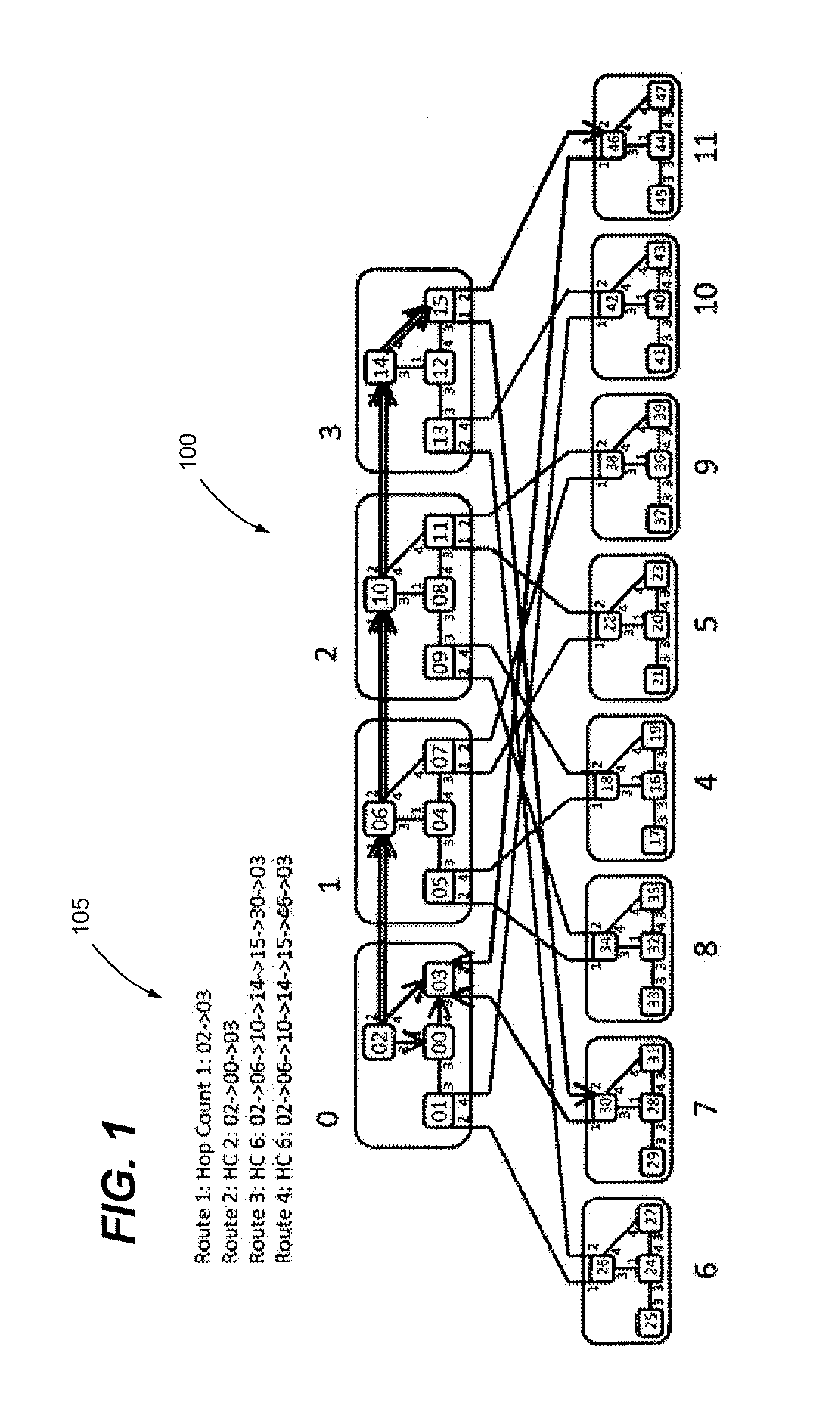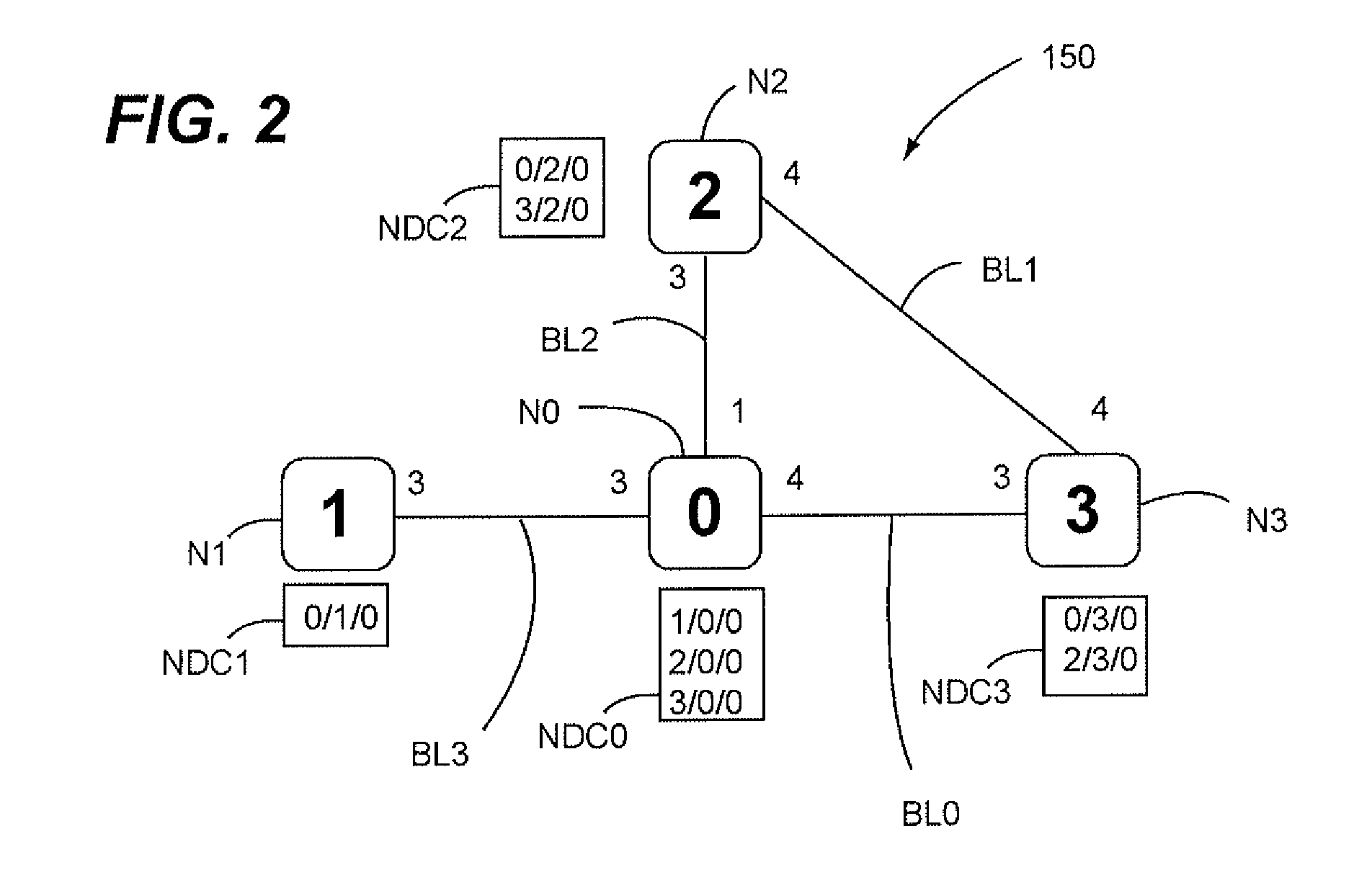Fabric discovery for a cluster of nodes
- Summary
- Abstract
- Description
- Claims
- Application Information
AI Technical Summary
Benefits of technology
Problems solved by technology
Method used
Image
Examples
Embodiment Construction
[0026]In view of the disclosures made herein, a skilled person will appreciate that the expected environment for embodiments of the present invention does not anticipate a given or typical layout of nodes within a fabric. The set of connections (i.e., links) between SoC nodes within the cluster is one example of and is referred to herein as a fabric (i.e., node interconnection structure). The mechanisms involved in implementing embodiments of the present invention need to be able to support configurations that change with nodes coming and going, being discovered, configured, included in routes, and then lost with necessary recovery to routes that used the node. These mechanisms must also allow customer configuration of aspects of the environment including not using some links (e.g., perhaps for power reasons) and networking configuration while also supporting default options when the configuration extends beyond what a customer has configured.
[0027]Embodiments of the present inventi...
PUM
 Login to View More
Login to View More Abstract
Description
Claims
Application Information
 Login to View More
Login to View More - Generate Ideas
- Intellectual Property
- Life Sciences
- Materials
- Tech Scout
- Unparalleled Data Quality
- Higher Quality Content
- 60% Fewer Hallucinations
Browse by: Latest US Patents, China's latest patents, Technical Efficacy Thesaurus, Application Domain, Technology Topic, Popular Technical Reports.
© 2025 PatSnap. All rights reserved.Legal|Privacy policy|Modern Slavery Act Transparency Statement|Sitemap|About US| Contact US: help@patsnap.com



